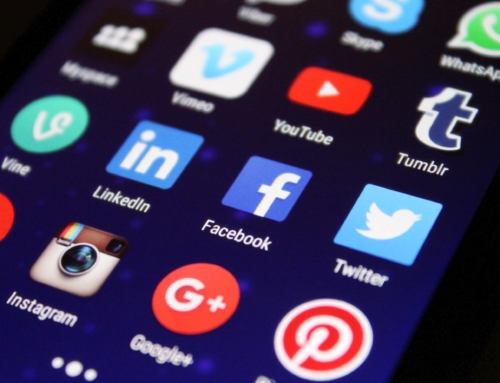
By 2020, you’ve probably figured out that social media is a marketing essential. The proof is in the pudding: there are 45 billion monthly Facebook users, 1 billion monthly Instagram users, and 336 million monthly Twitter users. To neglect these platforms is to neglect new customers.
Furthermore, look at the information compiled in last year’s Sprout Social Index:
- 83% of surveyed users use Facebook, and 66% like or follow a brand
- 90% of Instagram users follow a business, who in turn see high levels of engagement on the platform
- Twitter users are 26% more likely to view ads than on any other social platform
- 98% of Pinterest users try new things they find through the social channel
- LinkedIn has a 277% higher lead generation than Facebook
As you can see, social media marketing isn’t optional – though it can be complex. The cultural zeitgeist has social media in the center of everyday life, and this won’t change any time soon with the popularity of mobile smart devices. Thus, companies must know how to use social platforms to their advantage.
One of the most misunderstood aspects of social media marketing is paid advertising. We’re going to break down the basics with you, so you can experiment and make the most of paid social media marketing in 2020.
Outlining Your Goals
Before you invest in social ads, you have to ask yourself what your goals are. For instance, one company may boost a post to encourage more engagement, while another may have a specific sales profit they’re trying to meet. Naturally, one would hope that all marketing eventually leads to conversion – but what does conversion entail in the short-term?
The kind of conversion you seek – and therefore the purpose of your posting – is dependent on where the ad’s targeted audience is within the marketing funnel. For instance, if you’re trying to create brand awareness, then the purpose of your posting would be to increase your reach with a greater follower count. If you’re trying to retain customers or keep potential buyers interested, then your post should be crafted to encourage comments, shares, and even reviews. But if you’re trying to make a certain amount in sales, then the post should be made to directly encourage profit.
On the other hand, certain posts are worthwhile to make, but not to boost or promote financially. For instance, Wendy’s has made a name for themselves by having a decidedly-trollish Twitter account. They’re known to make playful jabs at their competitors and naysayers, and it’s served them well. But if they chose to boost one of their snarkier tweets, don’t you think it would come off a little desperate? Turning a roast into a “look at us” moment may take away from their dry-humored, “who cares?” persona.
Products and Services to Promote
It’s important to understand what is appropriate to advertise on social media. This may require studying online etiquette within your business niche. However, as a generality, there are a few types of products or services worth promoting, no matter what industry you operate inside.
Products and Services
Creating advertisements for products or services you sell is the most obvious use of promoted social media posts. Regardless of your business model, you could promote new products in your web store, consulting sessions, or other services you’re currently campaigning for. When you do this, you’ll want to use active language such as “buy,” “register,” “download,” and the like.
Discounts
It’s additionally smart to promote your products with a time-sensitive deal or discount. As BigCommerce put it, “nothing is more useful to a customer than a discount.” These are great for converting leads into customers – that is, moving them from the consideration stage to the purchase stage of the marketing funnel. Make sure you explain the discount and time-sensitive nature. “Sale ends tomorrow,” “through the end of the year,” and “this month only” are common examples of this.
Content
It’s important to establish yourself as a thought leader in your industry, which usually involves informational content. Doing so will help you build brand loyalty, and hopefully lead to increased sales. The medium on which the content lives may vary – YouTube, a blog on your website, or your newsletter. But all of them are worth boosting on social media. To ensure that your content is meeting its greatest potential, include internal links or call-to-action (CTA) buttons that encourage readers and those engaging with you to do so further.
Platform Differences
Because each social media platform is different, each ad must be optimized to fit its platform specifically. Relevant factors may include:
- Visual dimensions and text limitations
- Engagement statistics for content types
- Advertising and posting etiquette on each platform
- Different segmented audiences
It’s also extremely important to understand why people use each platform. If you try to approach Twitter ad the same way you would an Instagram ad, you may miss the mark of maximum engagement on one or both of the platforms. Thinking about this before boosting a post might save you a lot of time and money while helping you to properly optimize each ad for the space it belongs to.
We’ve only scratched the surface on paid social advertising, but hopefully, you have a great idea of where to start. Join us next month for Social Media Marketing Part 2: Organic Reach, where we cover the importance of creating engagement organically and naturally, without boosting or financially promoting your posts on social media.
Short on time?
Are you struggling to find time for social media marketing? We are here to help!




